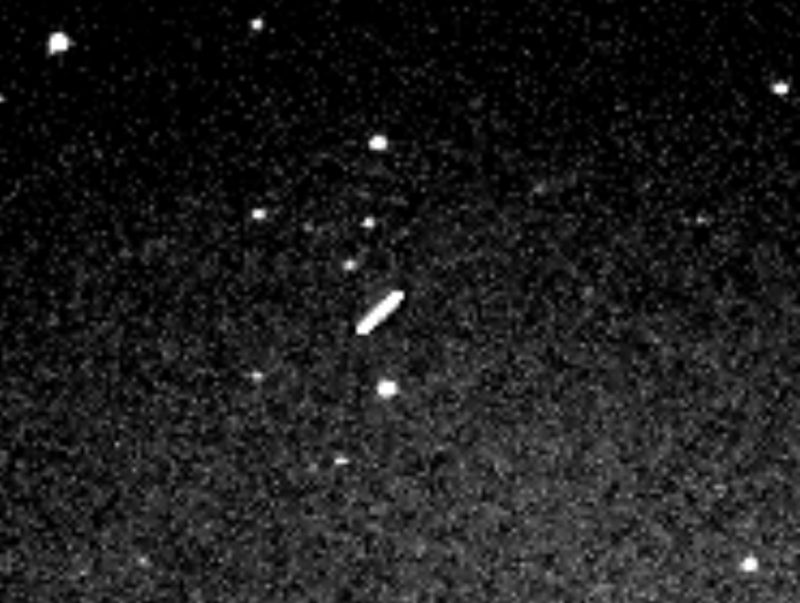
A stony asteroid similar in size to the Golden Gate Bridge (approximately 1.1 km long) will safely pass Earth on January 18, 2022. As you can see from this asteroid’s label – (7482) 1994 PC1 – it’s been known since 1994. It is classified as a Potentially Hazardous Asteroid due to its size and relatively close known flybys of our planet. An asteroid of this size strikes Earth approximately every 600,000 years. But we have nothing to fear from 1994 PC1 at its 2022 close approach. And … a plus … amateur astronomers with backyard telescopes might catch a glimpse of it as it sweeps past.
Potentially hazardous asteroid 7482
Robert McNaught discovered asteroid (7482) 1994 PC1 at the Siding Spring Observatory in Australia on August 9, 1994. With its trajectory in hand, astronomers found the space rock on earlier images from other observations that date back to September 1974. With 47 years of observations, its orbit is well established.
Closest approach to Earth occurs on January 18, 2022, at 4:51 p.m. EST (21:51 UTC). This approach will be the closest for this asteroid for at least the next 200 years for which astronomers have calculated its orbit.
The speeding asteroid will pass 1.2 million miles (1.93 million km) from Earth, or about 5.15 times the Earth-moon distance. That’s a very safe distance yet close enough to observe easily with a small backyard telescope.
The huge space rock is traveling at 43,754 miles per hour (or 19.56 kilometers per second) relative to Earth. The considerable speed will allow amateur astronomers to spot the fast asteroid. It will appear as a point of light, similar to a star, passing in front of background stars over the course of the evening. Asteroid (7482) 1994 PC1 will shine at around magnitude 10. An object at 10th magnitude is a decent target for observers using a 6-inch or larger backyard telescope from a dark-sky site.
See a video comparing the sizes of some of the known asteroids.
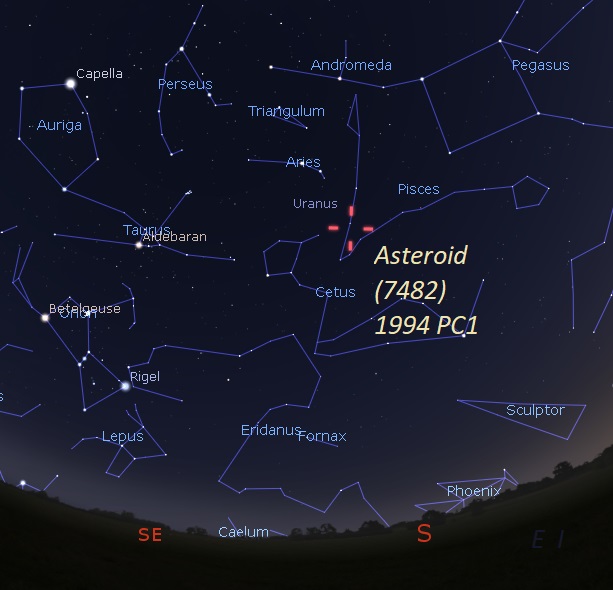
How to see it
Sky enthusiasts using a small telescope pointed at the correct time and location might be able to spot asteroid (7482) 1994 PC1. For North America, observers with backyard telescopes have the best opportunity to see the huge asteroid hours after the January 18 close approach (see charts below). You should be able to detect the space rock’s motion thanks to its size and proximity. When the asteroid is passing close to fixed background stars, the movement will be more noticeable.
Another good technique for spotting the asteroid is to attach a camera to the telescope and take exposures of 30 to 45 seconds. Point the camera and telescope at a reference star or object in the trajectory of the asteroid. Our charts below will help you find reference stars. An image exposed for several seconds shows the space rock’s motion as a streak of light, while shorter exposures reveal the asteroid as a point of light that appears in different locations in the images.
Although asteroid (7482) 1994 PC1 would be an excellent target for astronomers using the Goldstone Radar at California, unfortunately the DSS-14 radar antenna will not be able to study the space rock due to maintenance.
Finder maps for asteroid 7482 on January 18
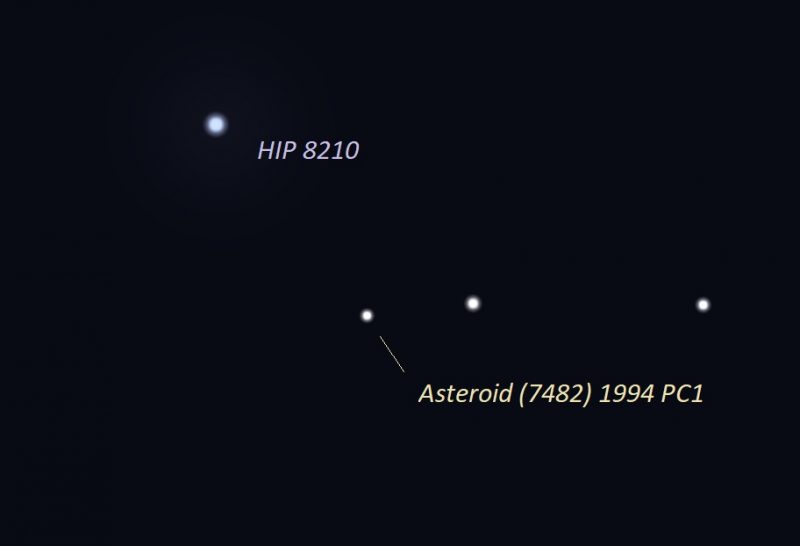

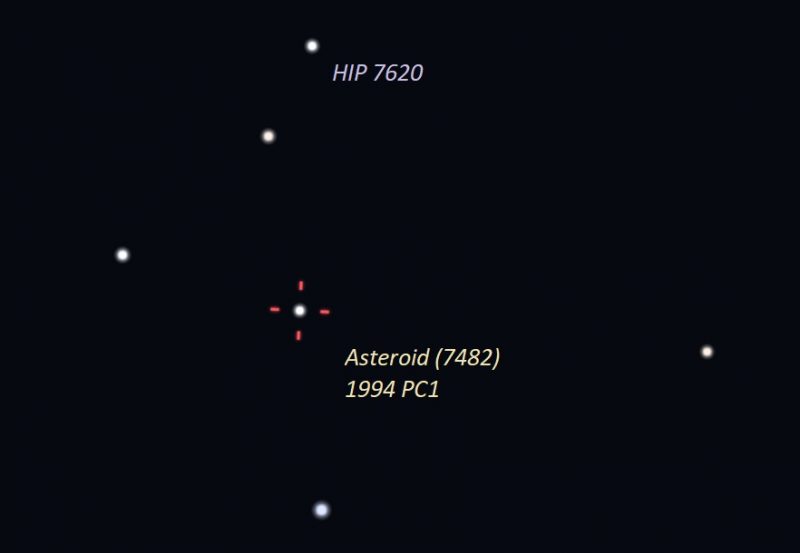
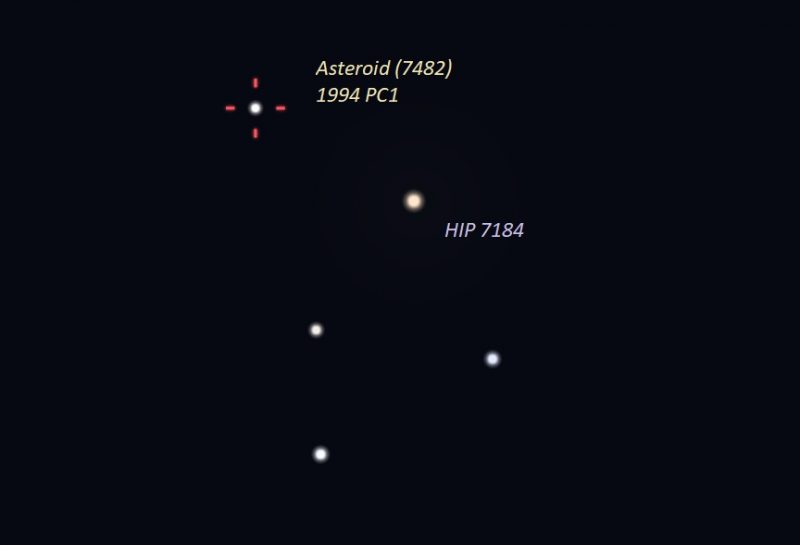

Bottom line: A large asteroid the size of the Golden Gate Bridge will pass Earth on January 18, 2022. The asteroid poses no threat to Earth and at its closest will pass more than five times the moon’s distance.
The post Huge asteroid will pass Earth safely January 18 first appeared on EarthSky.
0 Commentaires